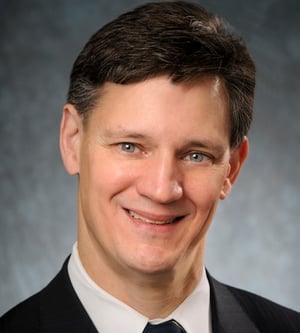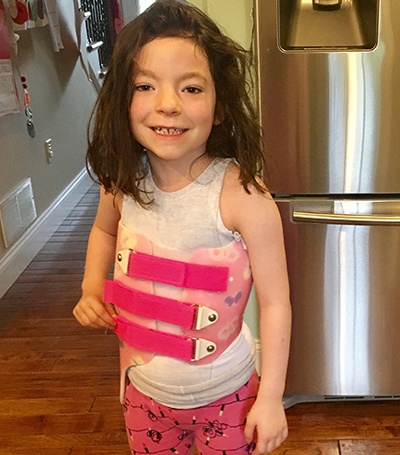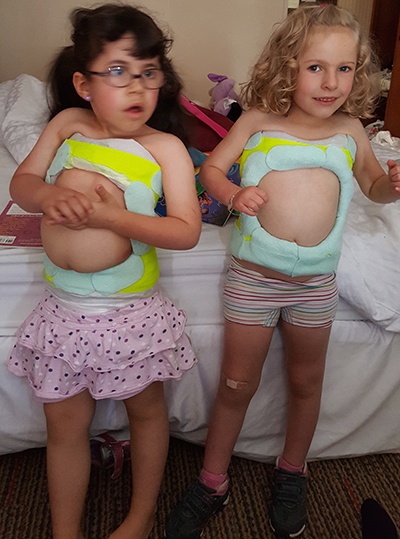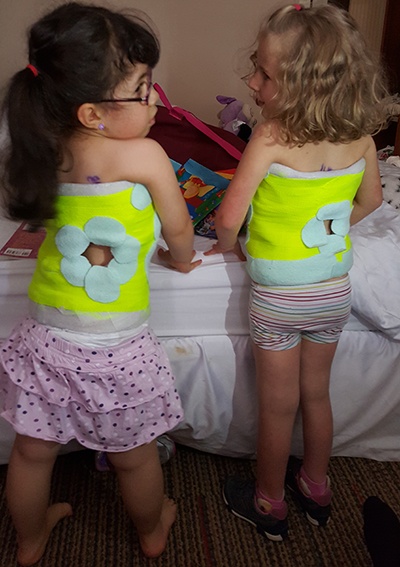 Like many medical providers, Dr. Harold van Bosse came to specialize on Prader-Willi Syndrome (PWS) by happenstance. In the late 90s, a pediatric patient with PWS came under his care for treatment of scoliosis. At the time, not much was known about orthopedic issues for PWS patients, but van Bosse learned what he could. The orthopedic surgeon ended up connecting with a few other doctors who had PWS cases around the time that he was preparing to surgically implant rods in his patient’s spine.
Like many medical providers, Dr. Harold van Bosse came to specialize on Prader-Willi Syndrome (PWS) by happenstance. In the late 90s, a pediatric patient with PWS came under his care for treatment of scoliosis. At the time, not much was known about orthopedic issues for PWS patients, but van Bosse learned what he could. The orthopedic surgeon ended up connecting with a few other doctors who had PWS cases around the time that he was preparing to surgically implant rods in his patient’s spine.
Over time, van Bosse began seeing more PWS patients, giving talks on orthopedic issues those patients face and continued to deepen his understanding of the condition. “Lucky for me, the PWS community, both families and PWS experts, are very welcoming and patient – I’ve learned so much from them,” he says. Van Bosse, who sees patients at Shiners Hospitals for Children in Philadelphia, will speak at the FPWR in Indianapolis August 25-27. He shared some of his expertise in orthopedic issues among PWS patients in advance of his talk.
 What orthopedic challenges do people with PWS face?
What orthopedic challenges do people with PWS face?
It comes down to a list of about 4 things:
- Scoliosis
- Developmental delay (late walking)
- Pes planus (flat feet)
- Hip dysplasia
Scoliosis
Scoliosis can first be seen in young children between sitting age and four years old, or it can occur later, when they are adolescents. In my practice, I see about twice as many young children with curves versus older kids with curves. For the younger children, once their curves get big enough (over 25 degrees), we need to start treating their curves by taking them to the operating room. Under anaesthesia, we apply a body cast using a special casting table. We change that cast every two to four months, depending on the patient’s age. In our series of patients, about one in three have responded well enough to the casting that their curves have gotten much smaller. Those children then are transitioned to a brace, and a year later, we look to wean them from the brace. The other two-thirds of kids usually started with larger curves, which we hope to control as long as possible, first with casting and then bracing, so we can delay surgery as long as possible.
 For the young kids with scoliosis, we start with spine casting usually no earlier than 18 months. If their curve is large, we will try to nurse them along until they are at least six years old, and place a pair of expandable implants next to the spine so that we can control the curve but continue to grow the spine as the child grows. For older children with large curves that we know will keep worsening even after they stopped growing, a spinal fusion is needed, both to help straighten and balance the spine, as well as to stop it from curving worse.
For the young kids with scoliosis, we start with spine casting usually no earlier than 18 months. If their curve is large, we will try to nurse them along until they are at least six years old, and place a pair of expandable implants next to the spine so that we can control the curve but continue to grow the spine as the child grows. For older children with large curves that we know will keep worsening even after they stopped growing, a spinal fusion is needed, both to help straighten and balance the spine, as well as to stop it from curving worse.
Developmental Delays
Children with PWS have their milestones delayed about 100 percent, meaning that if typical children are sitting at 6 months and walking by 12 months, children with PWS tend to first sit independently at 12 months, and walk by 24 months on average. To help speed that process, we work with the child’s physical therapist to get the child to do as many core strengthening exercises as possible. I also prescribe ankle-foot orthoses (AFOs) to help stabilize the ankles, making it easier for them to get up standing. Once they are walking well, we’ll shorten the braces, or discontinue them.
Flat Feet
Because of their hypotonia, most children with PWS will have or develop flat feet early on, when or before they start walking. If the condition isn’t addressed, they will grow into adults with very flat and possibly painful feet. Furthermore, having well-shaped feet helps you walk more efficiently. So I treat these kids with a short brace, from just below the ankles, to roll the heel directly under the ankle, and sweep the front of the foot from pointing outwards to lining up with the back of the foot. We keep them wearing these short braces (called UCBLs) until the feet develop a good arch with the heel directly under the ankle.
 Hip Dysplasia
Hip Dysplasia
Hip dysplasia happens relatively frequently, but serious hip deformity that needs treatment occurs probably one in 20 children. We can accept more hip dysplasia in children with PWS compared to typical children, because adults with PWS don’t seem to develop hip arthritis. If they had the expected amount of hip arthritis that we would predict, given their prevalence of hip dysplasia, then many adults with PWS would be getting hip replacements every year. But instead, we see only one or two adults with PWS getting hip replacements. Because of that, we need to carefully follow these children, but we can accept a bit less than perfect for hip shape.
What developments are happening in orthopedic PWS research?
It’s been exciting to review our experience with spinal casting and young children. We found that if a curve was 43 degrees or less when we started, our chances in favor of making it small enough that we could transition to a brace, then a year later out of the brace was about 37:1, which are great odds! Also, the newest technology out there for growing a spine (the expandable rods) includes some that can be lengthened in the clinic. A special device with a large magnet is placed on the child’s back, and as that magnet turns, it turns a magnet within the rod inside of the child, making the rod lengthen. So, whereas in the past when we’d have to take child back to the operating room twice a year to manually lengthen their rods, now we can do it 4 times a year in the clinic, in just a few, comfortable minutes.
What advice or encouragement would you offer PWS families?
Work with a doctor who understands PWS, or is at least willing to reach out to one of us who does. I advise my colleagues not to look at a child with a large curve who needs surgery and say to themselves: “I’ve got a patient with a severe scoliosis, and this esoteric condition PWS, which probably doesn’t mean anything.” Instead they should tell themselves: “This is a child with PWS first, scoliosis second.” Children with PWS follow a whole different rule book, and if you don’t know that, you’re likely to run into some big problems that otherwise could have been avoided.
What do you find most rewarding in your PWS work?
These are children that constantly keep me up on my toes, so that I can learn more of how to treat them correctly, and minimize the chances of big surgeries. But more important than that is how welcoming and affectionate most of my patients are, and the great sense of humor most of the families have.




 What orthopedic challenges do people with PWS face?
What orthopedic challenges do people with PWS face?



